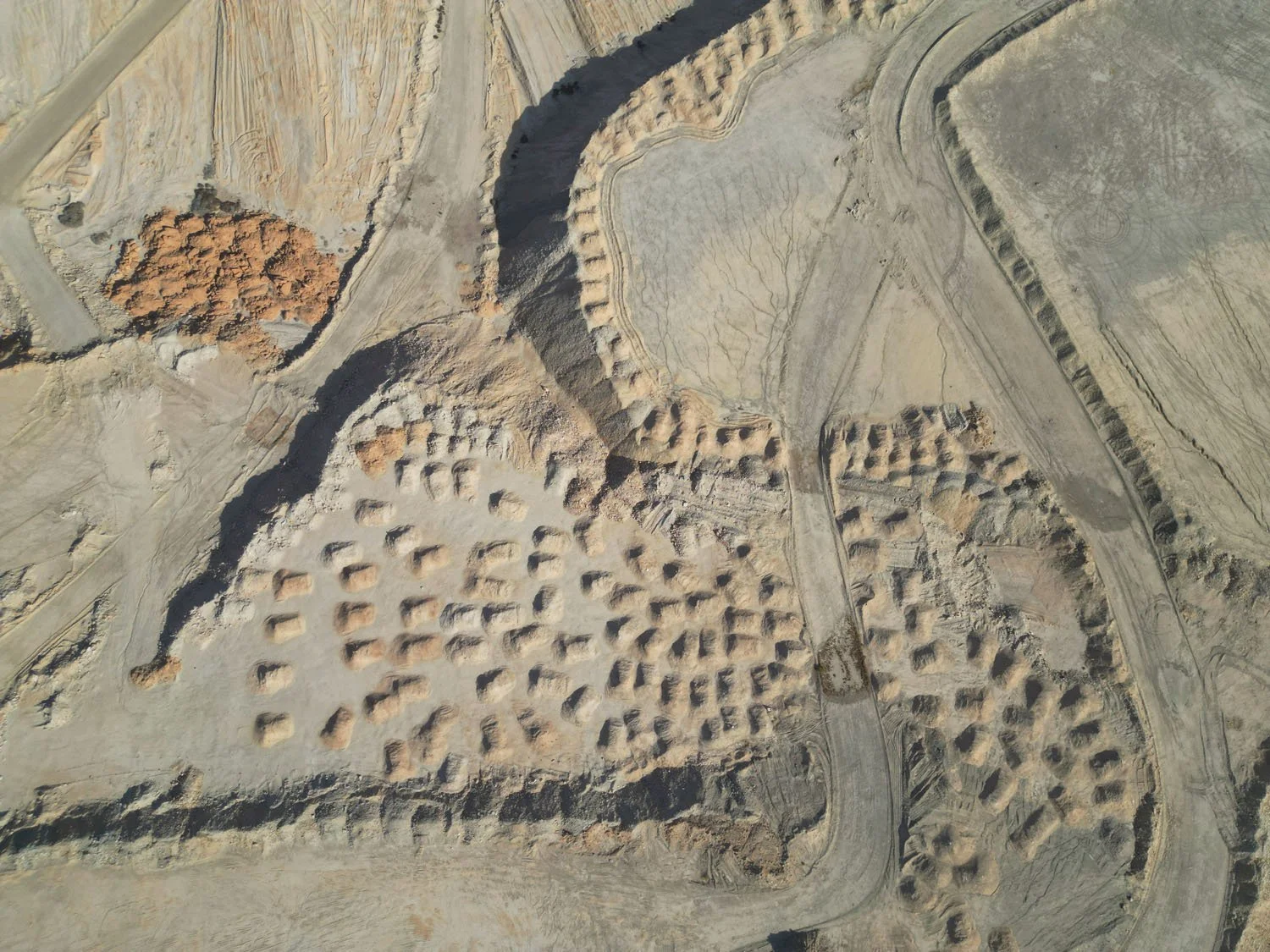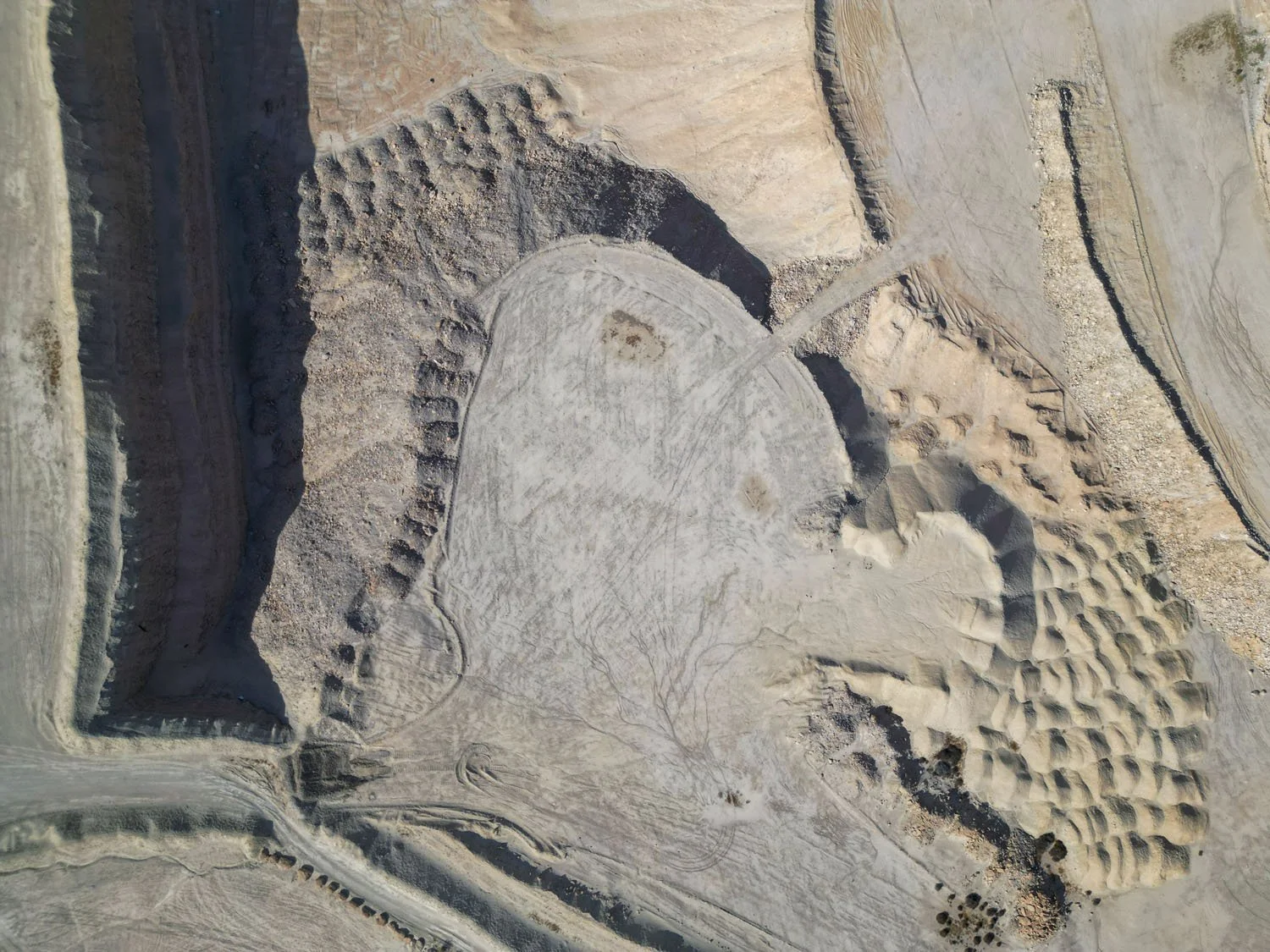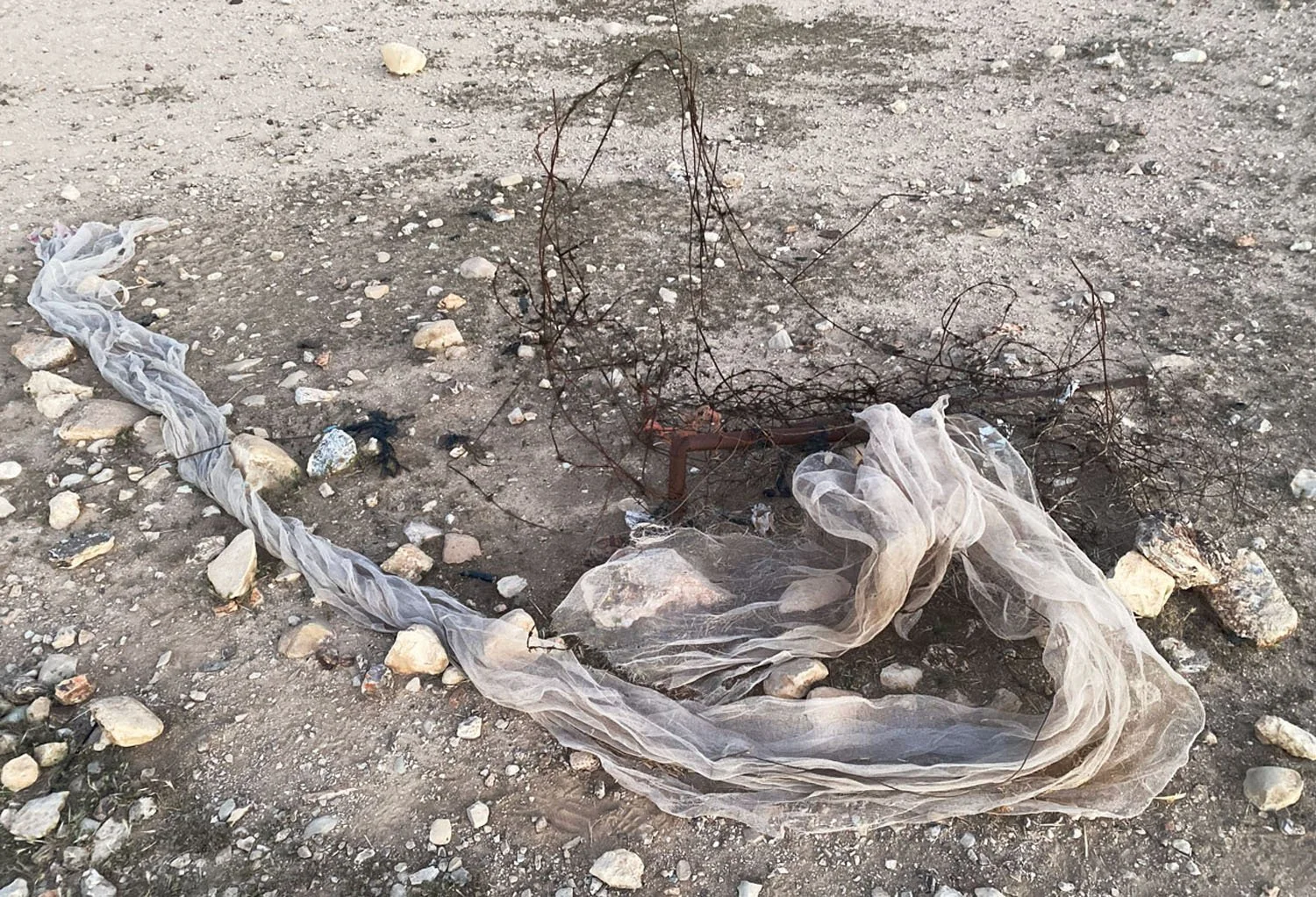No Horizon
No Horizon is a speculative journey to the center of Earth. It starts with a surface scan, flying, walking, scanning, dancing with the bare, etched surface of a desert. This surface is dotted with globes of rock containing millions of years old fish. It is piled with millenia-old human ruins, gauged with decades-old pits of extractive mining, pitted and inscribed with the recent marks of war and colonization.
Past this surface are opaque depths only accessible as data or as rock fragments expelled to the surface. In No Horizon, I wanted to touch something of this untouchable solidity, to sink into it or call it up to emerge of its own volition. Rather than violently drilling into the rock, I wanted to look at it the way Marcia Bjornerud, author of Timefullness does: as a verb; A living, dynamic, interconnected network of relationships in-becoming.
Like the rocks, this is a slowly but continuously transforming body of work: it consists of one-shot videos that seem to last forever, text, images that move but only a little, photographs taken with a drone, a body camera, or a 3d scanner, a mix of real, imagined and speculated, and many small and big interventions by several AI systems: changing my voice, adding a figure to a crack in the landscape, or working in concert with my handmade coloring and animation to speculate on the network of relationships of which a single piece of rock is comprised.
Catalog text by curator Leah Abir of A_CAC.
No Horizon / A_CAC exhibition catalog + documentation.
Interview with Maya Aner for Erev-Rav Magazine: Hebrew / English
Interview with Yuval Saar for Portfolio Magazine: Hebrew / English (auto translation)
ABOVE: No Horizon at A_CAC (Arad Contemporary Art Center) Exhibition views. BELOW: Works from the series, click on the images and video to learn more about the context for each.
ABOVE: Zin Skin refers to Mount Zin, the subject of various myths throughout history including being erroneously identified with the biblical “Mount Hor”, the resting place of Moses’ brother Aaron, and was known by some local Bedouin as “the place of destruction.” It is sandwiched between closed military zones, a nuclear reactor, sprawling phosphate mines, and a national nature preserve. On its inaccessible second plateau the artist’s 3d-scanning drone found, in giant stone inscriptions seen from the air, a range of emblems, insignia and mottos for early Israeli Kibutzim (socialist farming communes), youth groups, and most prominently, elite military commando units, the biggest of which, the motto for the Golani Commando, reads: “Any place we want. Any way we choose”. There’s also one long poetic sentence, that reads something like: “In this deafening silence, you cannot hear a thing unless you step forward towards the edge, towards the abyss, towards yourself”.
ABOVE LEFT: Iron Horizon was taken at the top of Hazeva Hill facing west, towards Mount Zin. The camera captures a fragment of the improvised monument erected in memory of Ari Perlmutter, a soldier killed in a bus bombing and the son of Simcha Perlmutter, the messianic Jew for Jesus who founded the nearby homestead of Ir Ovot. The video was created by animating a photograph using AI so that the supposedly static landscape we observe is periodically disrupted by various possibilities of motion, from a subtle tremor in the iron stalk to the desert itself transforming into seawater for a few moments.
ABOVE RIGHT: Ázzā is a manipulated drone photograph of Horbat 'Uza (Uza ruins) overlooking the Qinah wadi close to Arad, a military fortress about a thousand years old, from 700 AD to 300 BC.
ABOVE: Qinah (mourning) is a fictionalized image based on a photograph shot in Wadi Qinah, which translates to “Mourning Canyon”, a site located near the bedouin village of Al-Fourah and the controversial proposed phosphate mining zone, Brir Field. This piece, which like most of the work in “No Horizon” was created during the war-year of 2024, reflects perhaps the most blatantly the complex experience of living and making art in Israel during that time.
ABOVE: Fount is a sequence of images gushing out of the ground, depicting processes of formation and disintegration of a place. The images were created through the integration of a generative AI system with handmade animation. The instructions and images fed into the system reflect various elements, from macro to micro, of the ground surface between Beer Sheva and Jerusalem.
ABOVE: still sequence from The Fish and the Morningstar single-channel video. Click to go to project page, watch an excerpt of the video and read the text.
ABOVE and BELOW: Excerpts from Rock Itself, an in-progress short film / video installation combining analog stop-motion puppets, 3d animation, hand colored photographs, flipbook generative AI in feedback with all of the above and video footage to explore the network of ecological and speculative relationships comprising a single chunk of phosphorite rock. In other words, this piece is about exploring rock as a dynamic, living and interconnected web of relationships in flux.
ABOVE: Cistern Surface, single channel video, 9:51 min. A single, convoluted shot traversing all the surfaces of a 3000 year old cistern as they transform between micro to macro, at times evoking satellite imagery and aerial drone surveillance, witnessing the marks and sounds of the human and non-human inhabitants of the space.
ABOVE: Scarification, a photo series, depicts, via drone, details from recently shuttered phosphate mining fields and the marks they left on the land.
Rahaf









